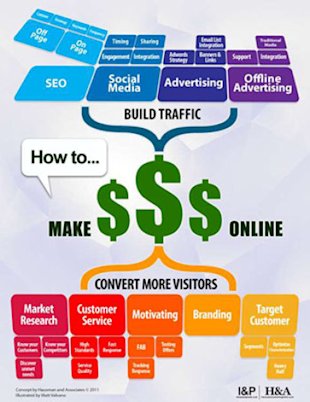
A key aspect of digital marketing involves choosing the right keyword in order to attract customers. Keywords are the words and phrases people use when they search for products or services. They are fundamental to search engine optimization and are crucial to the success of your content. Without the right keywords you could lose valuable search traffic. You can learn more about keywords by reading articles, attending conferences, and speaking to customers. To learn more about keywords, you may also want to research them in forums or community groups.
Your business may also be described by the right keyword. It can describe who your business is and what makes you different from other businesses. It can be used to create useful content that is targeted for your audience if it's done correctly. The right keywords will not only be relevant but also align with your buyer’s journey. Your content will be more attractive to your audience if you use the right keywords. They can also help you stand out and increase sales.

There are 2 main types of keywords, long tail and shorttail. Short-tail keywords refer to more broad topics. Examples of short-tail keywords are running trainers, the best holidays, and dark chocolate. Long-tail keywords include more specific terms and details that have low search volumes. Long-tail and long-tail are often confused. These are just more complicated terms that are hard to rank.
Although a single keyword is highly searched for, they are often difficult to rank for. This means that if you have a clothing boutique, you can rank for clothes. It will be hard to compete against giants such as Zappos and Nordstrom, which offer similar products. These keywords can be used as a general term, such as "clothes", making it easier to market and promote your business.
Although choosing the right keyword can be difficult for your business, it is possible to design a strategy that will bring you the most traffic. An excellent way to accomplish this is to use a tool, such as Alexa’s Keyword Difficulty Test. These tools can help you choose the right keywords and make your website more popular. If you don't have a tool, you can use your competitor's tools for research.

You should start a blog if you want to be successful in search engine optimization. It doesn't matter if you have no knowledge of keywords. You can even create your own website by using keywords for your business. This will help attract customers and find the right keywords. You can also use a blog for SEO purposes. The goals of your business and the products it sells will guide you in choosing the right keywords.
FAQ
How much should I spend on Content Marketing?
It all depends on how many leads are you looking to generate. The average cost per lead ranges from $5-$10, depending on the industry. We spent $20 per lead when we started our business. Now we spend $6-7 per leads.
Is content marketing easy to measure?
Yes! Measuring results is part of the process. It will help you decide if your efforts were a success and if you have to make any adjustments.
You can track visitors coming from many sources (email, social media and paid advertising) and track conversions like sales leads, purchases, and organic searches.
These metrics will show you which pieces performed well and highlight your most important opportunities.
Is content marketing effective?
Yes! Hubspot reports that Content Marketing has been ranked as one of three top digital marketing channels in lead generation.
Do I need an agent to do Content Marketing
No! There are many online tools to help you create high-quality content. A premium price is also a common charge for agencies.
How can I measure success with content marketing?
There are many methods to determine the effectiveness and efficiency of your content marketing strategy.
Google Analytics is a good tool to measure your progress. This tool will allow you to see from where your targeted traffic comes and the pages they visit most often.
It also gives you an indication of how long each visitor stayed on your site before leaving.
This information can be used to improve your content and to keep people engaged for longer periods.
This is another way to determine the success rate of your content-marketing efforts.
My email newsletters are providing value for my subscribers. What percentage of my mailing list have purchased paid memberships? How many people clicked through to my landing pages? Are people who click through more likely to convert than others?
These are all important metrics that you should track and monitor over time.
A third great way to measure the success of content marketing is to count how many people share your content through social media.
Consider starting now if this is something you aren't doing. It could be the difference between being visible and being ignored in your industry.
What are the differences between content strategies?
Content strategy is a general term that describes all aspects of how content is created, managed, distributed, measured, and optimized for digital channels. It encompasses more than what you post on social networks like Facebook and Twitter. It also includes what content you select to highlight on your blog, website, and other online properties.
Content strategy is important as it lets you know where your attention should go, what content you should use, how to communicate your messages to your audience, and which types of content you should use.
Understanding how content fits in with the overall business goals and objectives is key to helping you reach them.
What are the 7 steps in content marketing?
This seven-step content marketing process includes:
-
Identify the problem
-
Discover what's working today
-
Make new ideas
-
Develop them into strategies
-
You can test them
-
Take measurements
-
Continue the process until you find a solution.
This strategy is practical for both large and small businesses.
Statistics
- According to the Content Marketing Institute, 70% of B2B marketers and 86% of B2C marketers surveyed use content marketing in some form or other. (criteo.com)
- According to research compiled by Coschedule: Companies that publish 16+ blog posts a month get as much as 3.5x as much traffic as those that publish 0-4 posts a month. (criteo.com)
- Measure your goals with a progress indicator of 0-100%. Make your goals collaborative and transparent (semrush.com)
- Companies that use content marketing see approximately 30% higher growth rates than businesses not using it. (mailchimp.com)
- Progress indicators (0–100%) allow each team member to see how attainable each goal is and understand what remains to be accomplished. (semrush.com)
- Content marketing produces 3X more leads per dollar spent. Content marketing costs 62% less than traditional marketing. (criteo.com)
- We found that 40% of businesses don't have a documented strategy yet. (semrush.com)
- To further show the importance of this, 89% of people have stopped doing business with a company because of a poor experience. (neilpatel.com)
External Links
How To
How do you develop a content marketing strategy?
The first step in creating content for your clients is to define what kind of content. Once this is established, it's possible to start creating content. This could mean creating an editorial calendar and planning the source of these content. Content should always be purposeful. No matter whether content is blog posts, social-media updates, or other, it should all serve a single purpose.
Once you determine which type of content you want to produce, then it's important to find out who your target market is. Who are they looking for? And why should they care about what you have to offer them?
Next is to find ways of communicating with your target market. However, social media platforms are a fantastic way to get in touch with people. There are also other options like videos, podcasts or webinars.
After you have determined how you will communicate to your market, the next step in your content creation process is to choose what topics and types of information you want. This again goes back to the reason you're writing content. What problem does the content solve? Does it help? Is it going to make their lives easier?
Now that you know the content type you write, it is time to decide what to say. Are you looking to share information in your industry? On current events? What about specific products or services? Your focus is determined by your answer to this query.
Finally, once you've answered those questions, it's time to combine everything into one complete package.
You want to ensure that every piece of content you create serves its purpose. You don't want to waste anyone's time and energy, so you must build quality into every aspect of your content.
It is important to remember that content marketing has many moving parts.